On 5–6 October, this 2-day conference aims to connect work on artistic and scientific imagination, and to advance our understanding of the epistemic and heuristic roles that imagination can play.
Why, how, and when do scientists imagine, and what epistemological roles does the imagination play in scientific progress? Over the past few years, many philosophical accounts have emerged that are relevant to these questions. Roman Frigg, Arnon Levy, and Adam Toon have developed theories of scientific models that place imagination at the heart of modelling practice. And James R. Brown, Tamar Gendler, James McAllister, Letitia Meynell, and Nancy Nersessian have developed theories that recognize the indispensable role of the imagination in the performance of thought experiments. On the other hand, philosophers like Michael Weisberg dismiss imagination-based views of scientific modelling as mere “folk ontology”, and John D. Norton seems to claim that thought experiments are arguments whose imaginary components are epistemologically irrelevant.
In this conference we turn to aesthetics for help in addressing issues concerning scientific imagination-use. Aesthetics is said to have begun in 1717 with an essay called “The Pleasures of the Imagination” by Joseph Addison, and ever since imagination has been what Michael Polyani called “the cornerstone of aesthetic theory”. In recent years Kendall Walton has fruitfully explored the fundamental relevance of imagination for understanding literary, visual and auditory fictions. And many others have been inspired to do the same, including Greg Currie, David Davies, Peter Lamarque, Stein Olsen, and Kathleen Stock.
This is a free conference, but registration is required. Please email Fiora Salis to register.
Programme
Day 1: Thursday 5 October |
|||
| 9:30–10:30 | Tim de Mey (Erasmus): “Boggling the Imagination” Abstract | LAK.206 | |
| Coffee Break | |||
| 11:00–12:00 | Andrej Bicanski (UCL): “‘Where have I been and where should I go?’ – A Computational Modeler’s Perspective on Spatial Memory and Imagery” Abstract | LAK.206 | |
| Lunch | |||
| 13:30–15:00 | Contributed presentations Alma K. Barner (ANU): “Imagistic Mental Models” Abstract Alice Murphy (Leeds): “Thought Experiments, the Imagination and Surprise” Abstract |
LAK.206 | |
| Coffee Break | |||
| 15:30–16:30 | Margherita Arcangeli (Humboldt): “Re-Thinking the Role of Mental Imagery in Thought Experiments” Abstract | LAK.206 | |
| Short Break | |||
| 16:45–17:45 | Gregory Currie (York): “Learning by Imagining: Fiction and the Sciences” Abstract | LAK.206 | |
Day 2: Friday 6 October |
|||
| 9:30–10:30 | James Faeder (Pitt): TBA | LAK.206 | |
| Coffee Break | |||
| 11:00–12:00 | Adam Toon (Exeter): “Imagination in Scientific Modelling” Abstract | LAK.206 | |
| Lunch | |||
| 13:30–15:00 | Contributed presentations Alexander Bird (Bristol) and Alison Hills (Oxford): “The Value of Creative Imagination in the Sciences and the Arts” Abstract Charlene Brecevic (Notre Dame): “Erasing the Distinction between Scientific and Artistic Imagination” Abstract |
LAK.206 | |
| Coffee Break | |||
| 15:30–16:30 | Margot Strohminger (Humboldt): “Thought experiments as picturesque arguments” Abstract | LAK.206 | |
| Short Break | |||
| 16:45–17:45 | Letitia Meynell (Dalhousie): “Getting the Picture: Towards a New Account of Scientific Understanding” Abstract | LAK.206 | |
Location
All talks take place at LSE in room 2.06 of the Lakatos Building (LAK). For further help finding your way, see the LSE Maps and Directions website, or the Lakatos building special needs access guide via DisabledGo.
Childcare
LSE offers convenience childcare services near campus. Visit the LSE Nursery Homepage for more information and to apply.
Abstracts
Tim de Mey (Erasmus): “Boggling the Imagination”
Thought experimenters use their imagination in a goal-directed way. But some thought experiments -especially conceptual, philosophical thought experiments- are not sufficiently successful in appealing to the imagination, either because the possibilities they invoke are too far fetched, or, I contend, because they do not leave enough room to the imagination (they become mere “intuition pumps” in the pejorative sense of the word). In this paper, I investigate what we can learn from the history and the practices of philosophy about defining problems in such way that they are really successful in triggering imaginative problem-solving processes.
Andrej Bicanski (UCL): “‘Where have I been and where should I go?’ – A Computational Modeler’s Perspective on Spatial Memory and Imagery
To bridge the gap between neurophysiological and behavioral descriptions of a cognitive agent requires an understanding of how higher cognitive functions may relate to neuronal response properties. Spatial memory constitutes a rare case of cognition for which we can draw on a rich catalog of behavioral and neuropsychological findings on one side and a vast literature of electrophysiological research on the other. Here we propose a functional account of scene construction for spatial memory and imagery in terms of single neuron responses. The neural populations are modeled after cell types found across species (including humans) in the hippocampal formation. We show how an egocentric representation of the local sensory environment (a specific point of view) can be transformed into a viewpoint-independent representation for memory. The reverse transformation accounts for the reconstruction of a specific point of view based on the underlying viewpoint-independent memory (imagery). Representations of discrete objects are embedded into the spatial context and can populate the contextual representation in imagery, and smoothly changing the point of view in imagery yields imagined movement. The model provides a strong conceptual framework for spatial cognition, and provides a rare example of how higher cognitive functions could map onto complex neural responses.
Alma K. Barner (ANU): “Imagistic Mental Models”
In this paper I present an account of imagistic mental models. This account builds on elements of Goodman’s (1976) and van Fraassen’s (2008) account of representation, Frigg’s (2010) and Frigg’s & Nguyen’s (2016) Fiction View of Models. In the first part of the paper, I present the general version of the account of imagistic mental models. In the second part, I use the account to shed light on the nature of imagining perceptual experiences in the context of planning and evaluating actions. I argue thereby that imagination, as a private mental activity, is often best understood as a form of model construction, akin to how models are used in science. In the third part, I indicate how the account of imagistic mental models suggested applies to model-based scientific reasoning that substantially relies on imagery.
Imaginings are mental states that necessarily involve mental imagery. An example is picturing an elephant on a swing. Imagistic mental models necessarily involve imaginings. An example imagistic mental model is using imagination to understand how somebody else feels by imagining what it is like to feel a specific pain sensation. In the first part of the paper I present my general account of imagistic mental models. It appeals to Goodman’s (1976) account of representation-as. Moreover, the foundations of imagistic mental models build on a version similar to the DEKI account of representation, as explicated in Frigg & Nguyen (2016). Any imagistic mental model involves a vehicle of representation and a target (usually not a system) that is represented. The target is represented in a specific way, namely represented-as.
Representations-as crucially depend on interpretations. Consider imagining that the elephant on a swing is in fact your mother. Here, the vehicle is the mental state which involves an elephant-representation that denotes your mother as the target. Typically, mental images represent via resemblance relations. In this part, I argue that Denotation and Imputation are necessary features of any imagistic model, while Exemplification and Key are contingent. I also elaborate on other features of models, such as their identity conditions.
The account of representation presented provides for a better and more unified explanation of features commonly attributed to imaginings by philosophers of mind. For example, representation in imagination is considered to involve some interplay between imagistic and conceptual contents. Imagining that the elephant on the swing is my mother is considered to be supplied via an assignment or label (Kung (2010)), a supposition (Peacocke (1985)) or else involves an imaginative project (Martin (2002)). An account of imaginings as models is also particularly well-suited to account for their normative properties. As I argue in my (forthcoming), imaginings do not have a direction of fit. They are not subject to attitude- specific norms, unlike belief or desire. Instead, the normativity of imaginings is determined by their use in purpose-driven projects.
In the second part of the paper, I apply the framework to imaginings of perceptual experiences. I focus on one specific example. Empathy can be triggered by imagining what it is like to be somebody else. My aunt has arthritis in her hip. I intend to imagine having arthritis in my hip, because I would like to understand her needs better. This is an example of constructing a model of my aunt’s experiential state in order to yield a better understanding of her.7 In the case of imagistic mental models of experiences, the model vehicle is the mental representation which involves instantiated phenomenal properties. The target of the model is a perceptual experience. The representation is both a representation-of an experience and an experience- representation. Nevertheless, imaginings can also be of non-instantiated experiences or impossible experiences. Imaginings of perceptual experiences provide a particularly interesting set of examples as they instantiate properties the model represents.8 Imaginings are in that respect like concrete models, the primary candidates Frigg’s & Nguyen’s (2016) account is meant to capture. Furthermore, by appeal to the example of imagining my aunt’s pain, I highlight in what ways imagistic models of perceptual experiences crucially depend on approximations and exemplifications. I flesh out both the identity conditions of such models and their correctness conditions.
The account of imagistic mental models suggested is applicable to cases of scientific model- based reasoning that make use of imagistic representations. This important result is the focus of the third part of the paper. In it, I explicate Mach’s well-known thought experiment involving a chain that is draped over a double frictionless plane in terms of the account of imagistic mental models presented.
References
Goodman, Nelson (1976). Languages of Art. Indianapolis and Cambridge: Hackett.
van Fraassen, Bas C. (2008). The Scientific Representation. Paradoxes of Perspective. OUP. Langland-Hassan (2015). Imaginative Attitudes. Philosophy and Phenomenological Research 90 (3): 664-686.
Frigg, Roman (2009). Models and Fiction. Synthese 172: 251-68.
Frigg, Roman & Nguyen, James (2016). The Fiction View of Models Reloaded. The Monist
99 (3): 225-242.
Walton, Kendall L. (1990). Mimesis as Make-Believe: On the Foundations of the Representational Arts. Harvard University Press.
Martin, Michael G. F. (2002). The Transparency of Experience. Mind and Language 4 (4): 376-425.
Peacocke, Christopher (1985). Imagination, Experience, and Possibility. In John Foster & Howard Robinson (eds.), Essays on Berkeley: A Tercentennial Celebration. OUP.
Kung, Peter (2010). Imagining as a Guide to Possibility. Philosophy and Phenomenological Research 81 (3): 620-663.
Salis, Fiora & Frigg, Roman (forthcoming). Capturing the Scientific Imagination. In Peter Godfrey-Smith & Arnon Levy (eds.), The Scientific Imagination. OUP.
Alice Murphy (Leeds): “Thought Experiments, the Imagination and Surprise”
Discussion of the imagination and creative reasoning has been primarily located in the philosophy of art and until recently, rarely discussed in the case of science. The use of thought experiments (TEs) are an excellent starting point for thinking about the imagination in science more generally as TEs are tools of the imagination that have contributed to significant scientific advancements. But how TEs achieve this, and what their exact function is, is disputed. One way to approach these questions is to compare TEs with other methods in science such as “concrete” experiments (CEs) computer simulations (CSs), and modelling and simulating more generally. My focus will be on the comparison with CSs.
I will outline an issue surrounding the epistemic status of CSs compared to CEs and demonstrate that this also has consequences when thinking about the epistemology of TEs. The objection states that CSs cannot surprise us in the same way that CEs can. We want our scientific investigations to have the capacity to surprise us in ways that lead to important discoveries and motivates new research. It is alleged that in CSs, any unexpected behaviours that arise can be traced back to their design and initial assumptions, whereas CEs have the capacity to produce results that cannot be explained within the pre-existing theoretical framework and can therefore “confound” (Morgan, 2005).
Although there is little discussion of surprise in the case of TEs, it could be argued they also have less of a capacity to surprise. And perhaps even less so than CSs as they take place in the imagination and so, cannot handle such complex data. Beisbert and Norton (2012) analyse TEs and CSs as arguments as both produce knowledge in the same way: we build what we know into their logical construction, and this knowledge is transformed through a logical process. As they contain no new information about the world, their results cannot be surprising in the way a CEs can. If we want to maintain that TEs can produce confounding results, are we pushed towards Brown’s Platonism? On this view, TEs do involve the discovery of something which lies outside of existing knowledge—they allow intuitive access to the laws of nature which exist as platonic entities (Brown, 2004).
I’ll offer a response to the surprise argument for both TEs and CSs before considering how the difference between computer simulations and thought experiments (the role of the imagination in the performance of the latter) impacts TEs’ potential to surprise. It has been argued that as TEs take place in the imagination, each stage of the process must be transparent, whereas CSs are “opaque” and more complex and therefore surprises are more likely to occur (Lenhard, 2017). But I’ll argue that there is also reason to think that surprise in CSs arises from our cognitive limitations, whereas the freedom of the imagination allows discoveries in the sense of confoundment such as in the case of Einstein chasing the light beam. This can be offered as a response to arguments which claim that the rise of computer simulation methods means that thought experiments are becoming increasingly redundant in science (Chandrasekharan et al, 2011). I will show that the issue of surprise in TEs will benefit from carrying over insights gained from discussions of the possibility of knowledge through the imagination in the philosophy of art and mind, particularly considering the difficulties regarding its “transparent” and “voluntary” nature—which is a presumed difference in the comparison of the imagination with either perception or belief when considering its potential to productively surprise.
References
Beisbart and Norton (2012) ‘Why Monte Carlo Simulations Are Inferences and Not Experiments’, International Studies in the Philosophy of Science 26, no. 4
Brown (2004) ‘Why Thought Experiments Transcend Experience’, Contemporary Debates in Philosophy of Science, 23-43, Blackwell
Chandrasekharan et al. (2011) “Computational Modelling: Is this the end of thought experiments in science?”, Brown, Frappier and Meynell (eds.) Thought Experiments in Philosophy, Science and the Arts, Routledge
Lenhard (2017) ‘Thought Experiments and Computer Simulations’, The Routledge Companion to Thought Experiments, Routledge
Morgan (2005) ‘Experiments Versus Models: New Phenomena, Inference and Surprise’, Journal of Economic Methodology 12, no. 2
Margherita Arcangeli (Humboldt): “Re-thinking the role of mental imagery in thought experiments”
Scholars in the debate on thought experiments, as well as researchers in cognitive science and aesthetics working on imagination seem very often to take mental imagery to be equivalent to sensory imagination, a perception-like type of imagination. I contend that this equivalence is too quick, as mental imagery is not fully captured by sensory imagination. My aim is to argue that there are two different senses of “mental imagery” that are often ignored or confused. Mental imagery may refer to an attitude, which is perception-like in nature, or it may refer to a content, which can be grasped via different attitudes. I will sketch an account of imagination that does justice to both senses of “mental imagery” and is bound to help re-thinking the role of mental imagery in thought experiments.
Gregory Currie (York): Learning by imagining: fiction and the sciences
Suppose you read an article in the latest issue of the Journal of Personality and Social Psychology and, seeking lighter entertainment later the same day, dip into the works of Henry James. You tell yourself that, in their very different ways, they have helped you understand something about the mind. You also think that one of the differences is that the latter involved the exercise of imagination in ways the former did not, and that generally speaking the second encounter was a more imaginative activity than the first. None of this sounds obviously wrong. It’s not clear, on the other hand, how we would decide whether it is right or not. I don’t know of an available framework within which to decide, so I will start with some thoughts on method. I then say something about the role of the imagination in learning, and in particular about the differences and similarities between fiction and psychological science as bearers of knowledge, as conduits of learning, and about the ways they do and don’t exploit the imagination to achieve their epistemic goals.
Adam Toon (Exeter): “Imagination in scientific modelling”
Modelling plays a crucial role in scientists’ attempts to understand the world. And yet it is also puzzling since, in modelling, scientists seem to be able to learn about the world by first learning about things that don’t exist, like perfect spheres or frictionless surfaces. In previous work, I have argued that we can make sense of scientific modelling by understanding models as objects used in games of make-believe, like children’s dolls or toy trucks. In this talk, I will consider the implications of this idea for some of the main themes of this conference, such as the different kinds of imagination involved in science and how they can yield knowledge and understanding. I will also try to respond to some objections that have recently been raised against this approach to scientific modelling.
Alexander Bird (Bristol) & Alison Hills (Oxford): “The value of creative imagination in the science and the arts”
This paper examines the relationship between creative imagination and the generation of value in the sciences and in the arts.
First, we articulate and defend an account of creativity centred on the imagination: creativity is the exercise of the imagination (plus other conditions: originality, fertility, and motivation).
Creative imagination is almost universally held in high regard. Indeed, standard accounts of creativity define creativity in terms of value: creativity is essentially the production of (novel) objects of value. We reject this necessary connection between creative imagination and value. Rather the connection is contingent and dependent on context. In our view, therefore, there are important questions to be asked about when the exercise of imagination is valuable and when it is not, and about what promotes the value of the imagination when it is valuable. Another view that we reject (the ‘romantic’ view of creative imagination) holds that the imagination is most valuable when least constrained.
For example, a standard view in the philosophy of science makes a sharp distinction between the context of discovery and the context of justification. The former concerns the generation of new hypotheses, the latter concerns the assessment of the hypotheses for truth or nearness to the truth. The standard view holds that the role of the imagination is limited to the context of discovery. There the creative imagination is always valuable—the more hypotheses there are competing in the marketplace of ideas, the more likely it is we will find the truth (assuming that we are not limited by resources for testing hypotheses). Furthermore, Popper confirms the romantic view mentioned: scientists should use their imagination to generate bold hypotheses, i.e. hypotheses not be constrained by similarity to existing (recently refuted) hypotheses.
In our view the discovery/justification distinction is misplaced, in particular by separating the imagination from the epistemology of justification. This leads us to misunderstand the value (and disvalue) of the imagination in science. A key instance of this is found in inference to the best explanation (IBE). According to IBE, a hypothesis is justified when it is chosen from a set of competing hypotheses on the basis of its being a better explanation of the relevant evidence than the competitors. It is important that the set of hypotheses should be large enough to be likely include the true hypothesis and all plausible competitors. A favoured hypothesis, even if it is true, is not justified if it has not been properly compared to such competitors. Hence for IBE to generate justification and knowledge the subject must have the imaginative capacity to generate the relevant competitors. So the context of justification and the context of discovery overlap here: far from imagination being divorced from justification, the former is essential to (and constitutive of) the latter in a central form of inference used in science.
Thus the discovery/justification distinction fails to allow for the positive epistemic constitutive value of imagination. It also over-values the imagination epistemically. For it assumes that more imagination and so more hypotheses are always good—the context of justification will discern which hypotheses are likely to be true. However, this is not the case, as the replication crisis in biomedicine and social psychology shows. Those fields are plagued by the failure of later tests to confirm hypotheses that were confirmed by earlier tests. One plausible explanation for this is that the initially confirmed hypotheses are in fact false. These sciences have a non-negligible false-positive rate in the testing of hypotheses—usually 5%, because that is the significance level standardly used in these sciences. It can be shown that if one uses tests with this level of significance and if one generates and tests many hypotheses the majority of which are false, then a large proportion (even a majority) of the hypotheses that are tested and found to be ‘true’ will in fact be false. So the over-use of the imagination in generating hypotheses, unconstrained by considerations indicating in advance that they are likely to be true, in fact undermines the confidence we can have in the scientific methods standardly used in science and therefore in the theories they endorse.
These examples show that while the imagination is of central importance in science, its value depends on its being directed towards plausible hypotheses. Indeed, we suggest that a key function of Kuhnian paradigms (exemplars) is precisely to train scientists’ imaginations to be more likely to produce valuable (in our terms, true) hypotheses.
One might think that science contrasts with art in this respect. The importance of truth to science explains why the value of imagination in science is ambiguous and contextual. Whereas in the arts, where truth does not play this role, creative imagination will always be valuable, especially when unconstrained.
Using examples from music and the other arts we reject this view. Although it may be true that imagination is essential to the creation of value in the arts, it does not follow that what the creative imagination produces is always valuable. Just as in the sciences, it is possible for the imagination to produce work of no value. We argue furthermore that even the greatest works of art, while showing great originality are also constrained by tradition, and that this constraint contributes to their value. We conclude by returning to the Kuhnian ideas mentioned above. In both the sciences and the arts, the creative thinker, in order to produce work of value must navigate a tension between the desire for originality and recognizing a tradition that gives a work its value.
Charlene Brecevic (Notre Dame): “Erasing the Distinction between Scientific and Artistic Imagination”
Imagination is implemented in both scientific and aesthetic contexts as a way in which scientists and artists can creatively engage with the world. As is common in philosophy of science, there may exist an intuition that scientific imagination must be distinct from artistic imagination in some respect. Some may suggest that the representations generated by means of these divergent forms of imagination are the source of such divergence. Unsurprisingly, one may hold that Jean Basquiat’s Dustheads (1982) represents classist struggles and the phenomenological experiences of racism in a fundamentally different way than the Lorentzian manifold represents spacetime.
Similarly, others may argue that the knowledge we gain from evaluating the erratic paint splattering on Jackson Pollock’s canvases will be of a different kind than the knowledge we gain from the San Francisco Bay Dam model, in virtue of the fact that the former and the latter are distinct varieties of representation. The question of whether or not such a demarcation between scientific representations and artistic representations actually exists is therefore nontrivial and must be argued for either way. I will argue that there is no inherent distinction between artistic and scientific representations and therefore no distinction between artistic and scientific imagination. I claim that the perceived difference arises from different interpretative constraints on the representations in question.
If one were to assume for the sake of argument that there is a demarcation principle distinguishing scientific representation from artistic representation, one possible reasoning is that scientific representations are distinct in virtue of the fact that the process of constructing scientific models is itself distinct. In other words, one may argue that, to a great extent, scientific representations are restricted by their making use of certain scientific laws, principles, or contemporary understandings with respect to relevant phenomena, whereas artistic representations are not constrained in these ways. The argument may be pushed further so as to claim that even when artistic representations respect contemporary scientific understandings, their means of generating the work itself are not scientific. However, many artists make use of scientific or mathematical procedures to produce aesthetic works which do not differ, except for intended use, from those procedures used to produce scientific or mathematical knowledge.
Examples of these kinds of works include Paul Vanouse’s Latent Figue Protocol (2005) and Margaret and Christine Wertheim’s Hyperbolic Crochet Coral Reef Project (2005).
These works indicate that the methods employed for constructing scientific representations are not necessarily circumscribed to scientific environments or scientific projects. Since artistic representations can be generated using scientific procedures and mathematical algorithms, if there truly is a distinction between artistic and scientific representations, it must lie somewhere other than the techniques used in their construction. Is there another unique aspect of scientific representation that can salvage the demarcation? One might answer affirmatively and suggest that the difference can be found in the nature of the target systems involve in artistic and scientific investigation. However, this explanation also fails, as evidenced by aesthetic works which target physical phenomena and scientific data concerning said phenomena—as made evident by Lita Albuquerque’s Stellar Axis: Antarctica (2006) and Helen and Newton Harrison’s The Mountain in the Greenhouse from Peninsula Europe (2001).
Albuquerque and the Harrisons demonstrate that the target systems of scientific representations can be shared by artistic representations—more specifically, aesthetic works can serve as representational vehicles for physical phenomena and data concerning certain features of those phenomena. Since there exist target systems which are not necessarily restricted to representations used in scientific contexts, the demarcation of scientific representation cannot be grounded in the alleged uniqueness of the representational target. Attempting to salvage the demarcation problem yet again, one may insist that although artistic representations may be constructed with the same means or share the same targets as scientific representations, artistic representations do not share these two properties simultaneously. Scientific representations, it may be argued, not only aim to represent something in the physical world, but will carry out scientific procedures or make use of certain scientific principles to achieve such an end.
However, I argue that this reasoning will also fail to maintain the demarcation of scientific representation when we consider scientific representations—as presented in Gary Schneider’s Genetic Self-Portrait (1997) and Sam Easterson’s work capturing the world as seen from “behind the eyes” of different animals (ongoing)—that seemingly become artistic representations with a simple change in environment.
My central claim is that if one were to imagine a spectrum between artistic and scientific representation, this spectrum would be highly similar to, and more appositely understood as, one between least interpretatively constrained to most interpretatively constrained representations. This imagined spectrum should be understood as a heuristic device only, since, given my argument in the previous section, I do not hold that scientific representation is something fundamentally distinct from artistic representation. To prevent the conclusion that this difference justifies a demarcation principle between these kinds of representation, I provide examples that deviate from this generalization. It does not follow that all artistic representations and all scientific representations are subject to the same degree of interpretative constraints. In fact, when a particular division of science stumbles upon phenomena which exists in a domain with under-established interpretative constraints, there are oftentimes major disagreements between knowledgeable individuals—e.g. contemporary controversies concerning low-dose effects of endocrine disrupting chemicals (EDCs). Similarly, there are aesthetic works that explicitly reveal how the work is to be interpreted, rendering disagreements in interpretation spurious—such as Alicia Eggert’s Future (2016).
I conclude by arguing that a failure to maintain the demarcation between scientific and artistic representations leads to the failure to maintain any meaningful demarcation between scientific and artistic imagination. If imagination is understood to be the act of generating representations, whether they are wholly abstract or perceptible material entities, and the demarcation separating scientific from artistic representations is collapsed, the demarcation between scientific and artistic imagination is therefore untenable.
Margot Strohminger (Humboldt): “Thought experiments as picturesque arguments”
John Norton (1991, 1996, 2004) provides the leading defense of the view that thought experiments in science are arguments. His defense encounters serious difficulties, however. In this talk I provide a new defense of the view that can overcome these difficulties. The arguments identified with thought experiments differ in two key respects from Norton’s: their logical structure and the epistemology of their assumptions. In the present defense, scientist’s thought experiments resemble many philosophers’ thought experiments as well as many ordinary arguments about counterfactual possibilities.
Letitia Meynell (Halifax): “Getting the picture: Towards a new account of scientific understanding”
In recent years there has been an explosion of interest in scientific understanding as an epistemic success term that is distinct from scientific knowledge. Although this literature is diverse, three dominant strands can be found: understanding as unification (Kitcher 1981; Friedman 1974); understanding through mechanistic thinking, or causal modelling (Woodward 2003; Salmon 1998); and a kind of contextualist pluralist approach (Goodman 1968, 1978; Elgin 1997, 2004; De Regt and Dieks 2005). I will argue that, far from being competitors, these theories are complementary. This becomes clear if we treat the characteristic content of understanding as pictorial, in contrast to the characteristic content of knowledge, which is propositional. By virtue of the distinctive ways in which they present their content, epistemically efficacious pictures unify, show mechanical (and other) causal relations, allow for multiple readings, and contextualize their content, while still having determinate content. The character of the cognitive manoeuvers and assessments that pictures are particularly effective at supporting provides a model for understanding more generally.
This event is organised by LSE’s Centre for Philosophy of Natural and Social Science and it is co-sponsored by the British Society of Aesthetics, the Mind Association, the Aristotelian Society and the Marie Skłodowska-Curie grant agreement No 654034.
For any enquiries or more information regarding the conference, please contact Fiora Salis or Mike Stuart.
Featured image: The Mike O’Callaghan–Pat Tillman Memorial Bridge under construction, 2010.
David Jones, via Wikimedia Commons / CC BY 2.0 (cropped and tinted from original)


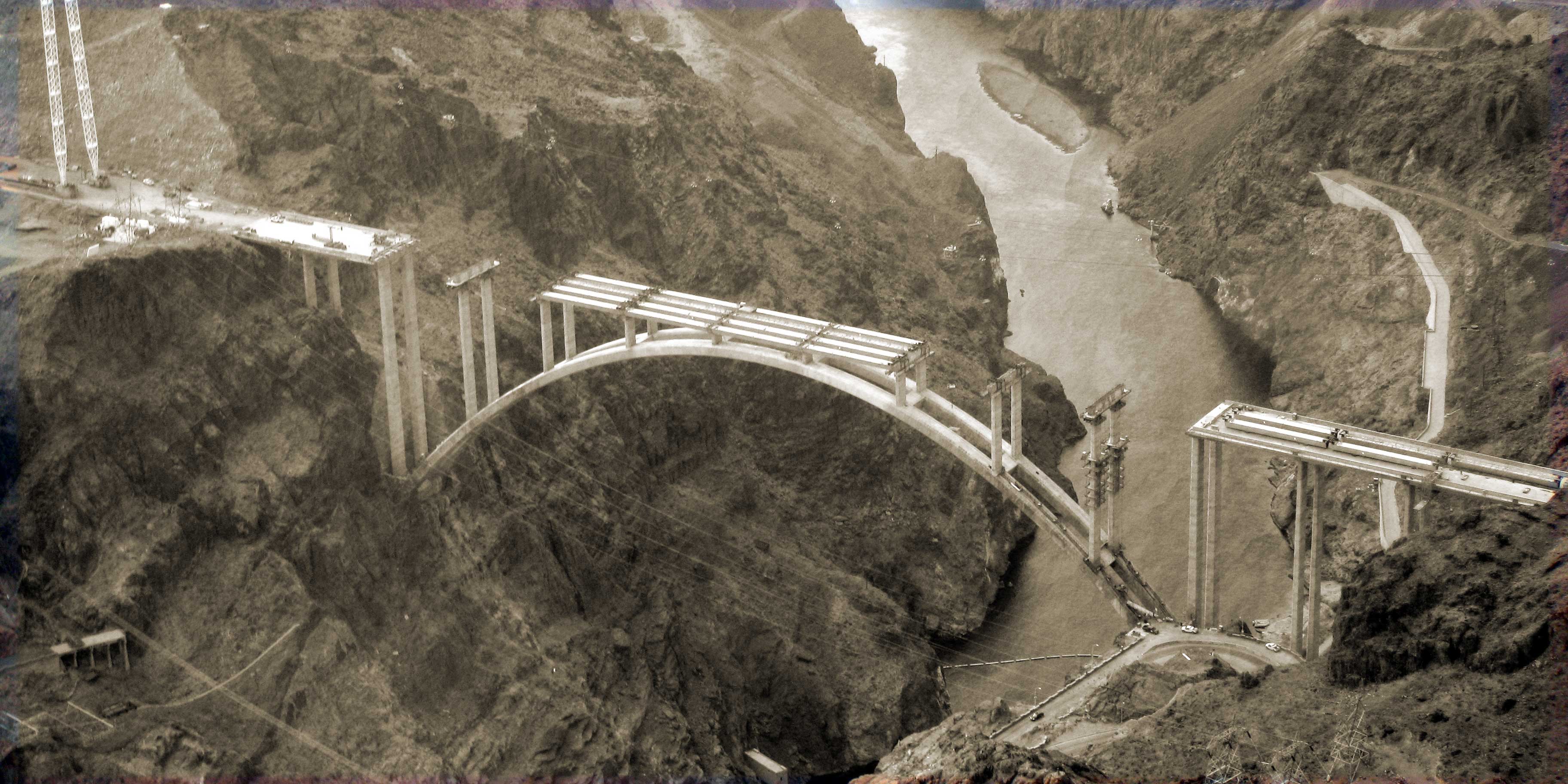
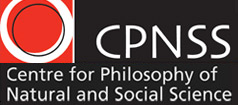

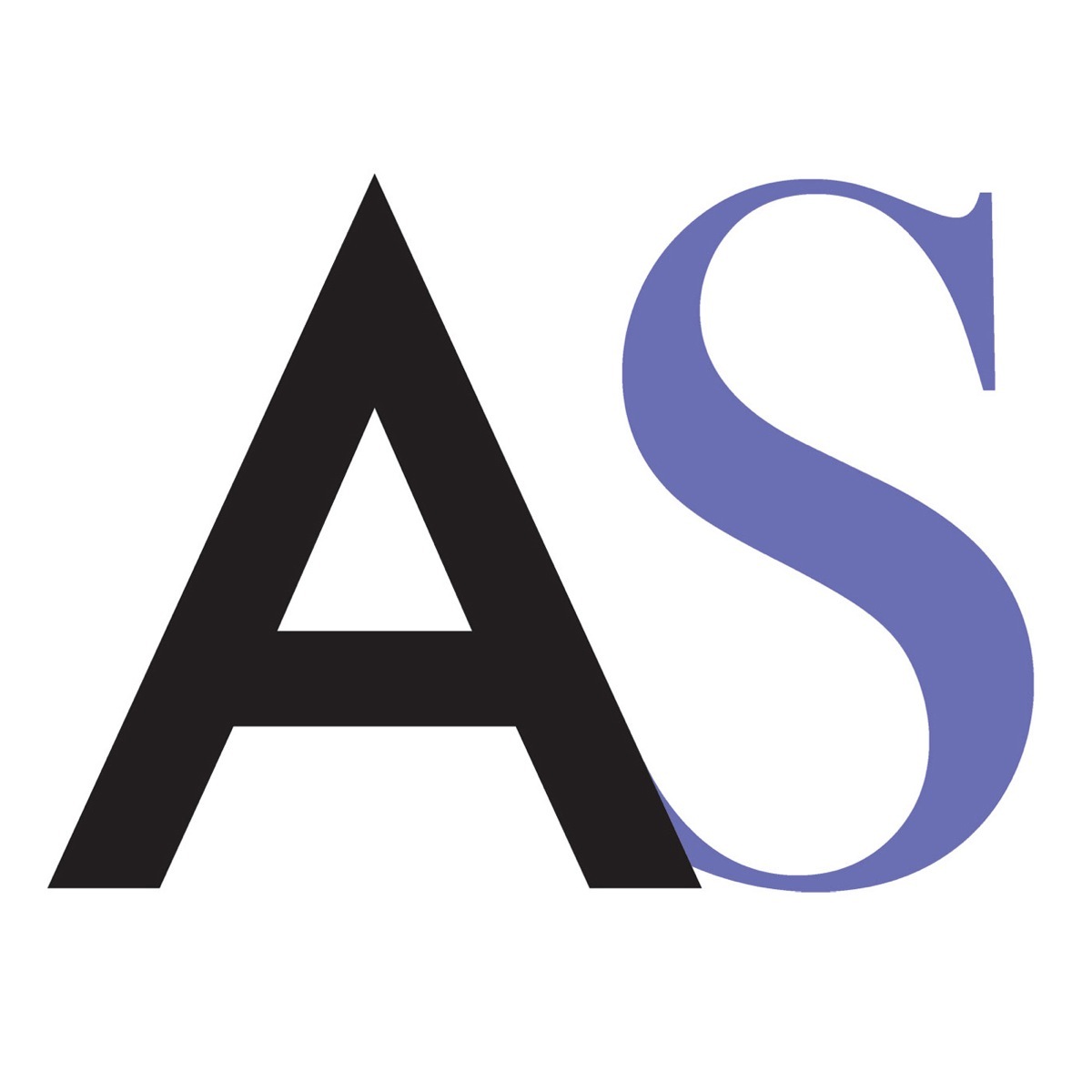


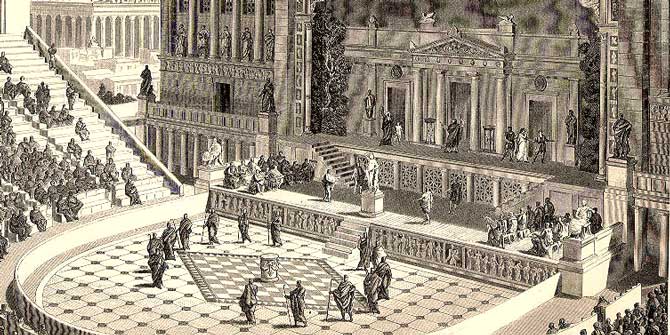
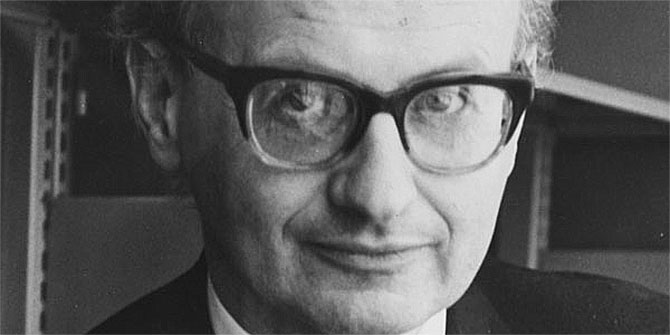
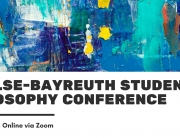
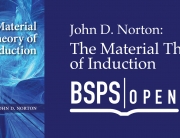
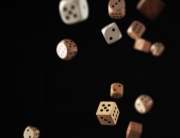
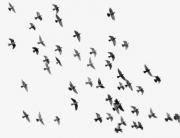
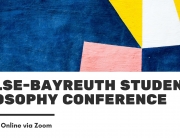
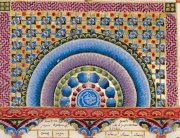

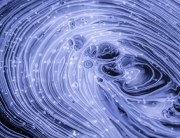

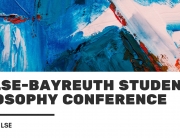
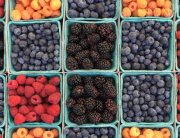


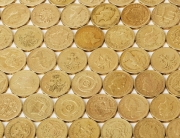
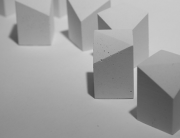

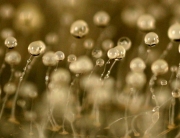
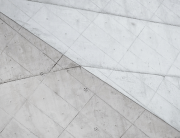
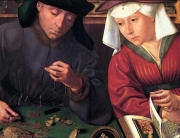
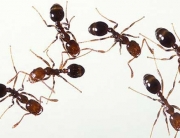
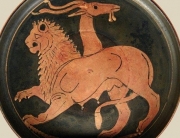
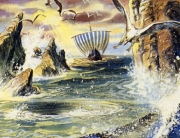
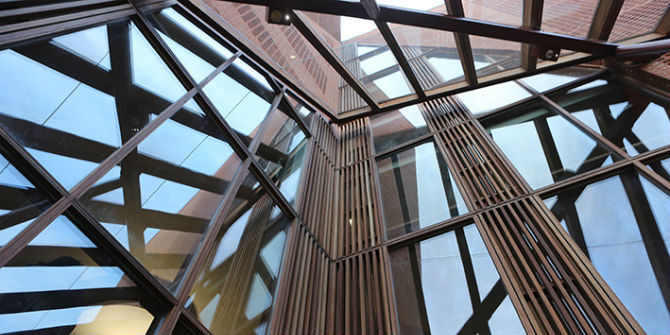
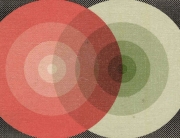
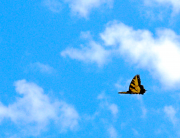

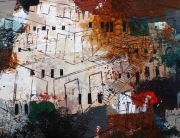
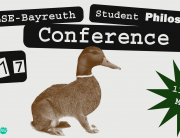

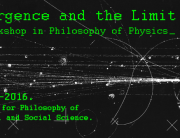
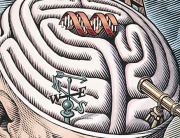
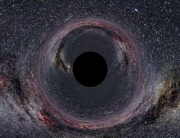

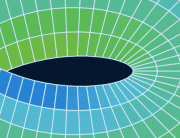
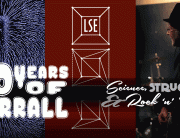
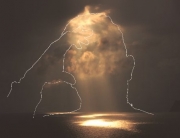
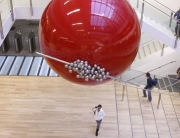
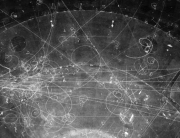
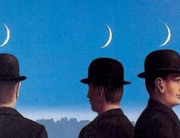
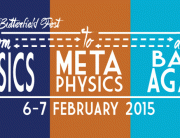
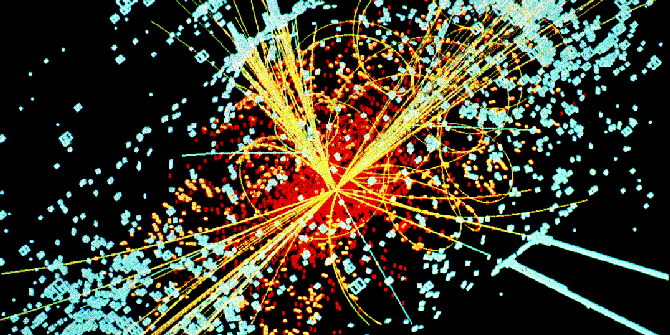
Connect with us
Facebook
Twitter
Youtube
Flickr